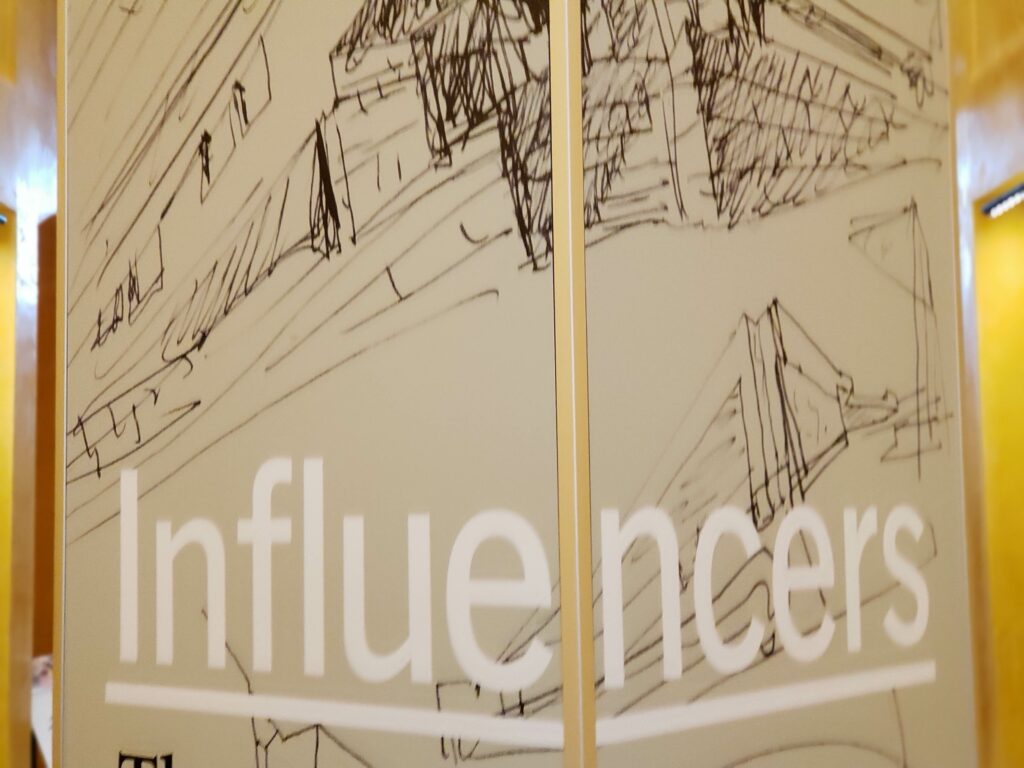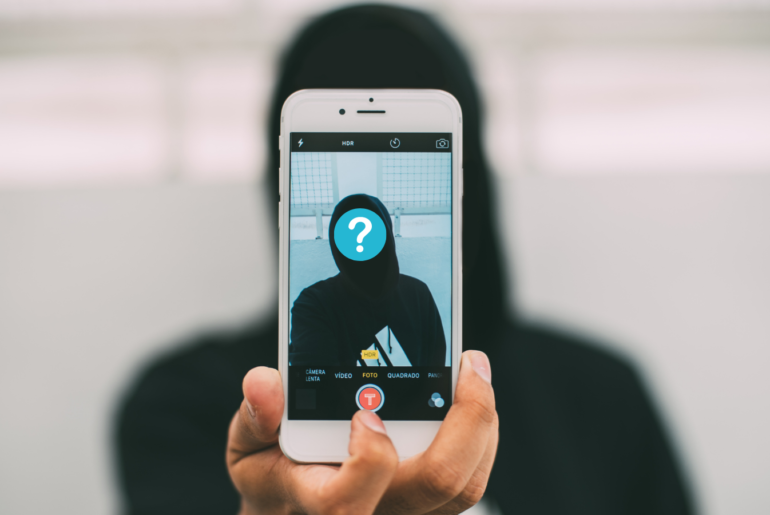Internal Influencer has become a buzzword as brands seek new avenues to amplify the power of their social media marketing. The term has yet to fall into common usage and there is still a degree of variability with definitions. Internal Influencers of all stripes will be an integral part of marketing programs in the future.
What is an Internal Influencer?
An Internal Influencer is a social content creator that is directly employed by a brand or organization. Social content creation can be all or part of their job function.
The benefit of an internal influencer is the degree of control exerted on the influencer by an organization. Since they are employed by said organization, the content they create can be guided by strict rules dictated by the marketing and communications teams. These rules can outline style, messaging, distribution, and other aspects of the influencer’s content.
The cost-benefit of an internal influencer is greatly dependent on their “type”, defined further in this piece. Having an influencer on salary, as a direct employee, can be more cost-effective than trying to maintain a menagerie of external influencers.
What are the Types of Internal Influencers?
We have identified four main types of Internal Influencers:
- The Evangelist
- The Social Media Maven
- The Incidental
- The EGC
The Evangelist
The term Technology Evangelist existed for decades before social media influencers arrived on the scene. The core value of the Evangelist is their ability to build critical mass for a given technology and amplify their message across channels. Since Evangelists are focused on targeted messaging, it makes sense that modern practitioners would use social media as their megaphone.
Guy Kawasaki, noted Apple evangelist (now Canva evangelist), wrote in a 2015 Harvard Business Review Article, “Many businesses have embraced the idea that customers are potential evangelists; the most ardent of them will spread the word about your company’s products or services without pay. But it’s important to remember that managers—even those outside the marketing department—can be evangelists too.”
Neil Patel, SEO evangelist and strategist, tells Forbes that evangelists must do 5 things.
- They start movements.
- They use their personal brand as a platform.
- They explain.
- They inspire.
- They use a variety of methods.
If Evangelism is the right type of Internal Influencer for your brand, start the search within. There are likely already people within your organization that love, live, and breathe your product. These are the folks who are already acting as ambassadors for your company, in an official capacity or otherwise. This could be the time to pull them up and use them as an influencer.
The Social Media Maven
The Social Media Maven is the closest to what marketers would consider a “traditional influencer”. The term is derived from the Yiddish meaning “expert” or “connoisseur”. These people have cultivated a follower-base that engages with their content. They are recognized by their fans as subject experts and speak directly to individuals who have interest in their topic.
These internal influencers have an intuitive sense for creating effective content. They may not be classically trained, but have consumed media to a point that they understand what will “track”. They will not necessarily have millions of followers, and that’s perfect. Micro- and Nano-influencers have proven to be more effective in many industries than Mega-influencers.
Mavens will often specialize in one or more specific channels, like TikTok, Instagram, or Reddit. Beware of trying to force their content to “cross-over”, particularly if the creator does not have experience posting on other social platforms. It will take some effort and encouragement to teach the Maven to retool their message for specific channels.
Hootsuite has a great blog about Cross-Posting and Cross-Promoting strategies.
It should be noted that many Mavens who have cultivated their own following may be hesitant to turn the effort towards corporate goals. Many Mavens also “influence” on topics that are completely unrelated to their professional work. Before engaging a Social Media Maven as an internal influencer you should have a serious conversation with them about the opportunities, work-life balance, and specific expectations for content creation.
We will discuss how to cultivate Social Media Mavens, as internal influencers, from scratch in an upcoming blog post.
The Incidental
Internal Influencers can pop up in unexpected places. Consider Tony Piloseno, a college student working part-time as a Sherwin-Williams sales associate. He found the paint mixing and color matching process to be interesting; and thought others might too. He created a Tiktok channel called @tonesterpaints. The channel experienced explosive growth and several of his videos went viral. At the time of this writing, he has over 1.4 million followers and over 24 million likes.
This young man was using his employee discount to pay for the paint that he mixed. Unfortunately, rather than celebrate him as a rising internal influencer, Sherwin-Williams decided to fire Tony. (Don’t worry, Tony was immediately given a number of job offers and hired by Florida Paints just a week later.)
Internal Influencers can appear in interesting places. They may be associates on your sales floor. They could be people that are part of your logistics chain. Keep an eye out for, and an open mind, for these incidental influencers. Many start without the goal of being Insta-famous, but some eventually are.
Identify these influencers by implementing a social listening strategy. Be sure that your methodology or toolkit is able to capture content across multiple channels. Facebook, Twitter, and Instagram should be the baseline at this point. Include Snapchat, TikTok, and Byte if there is any possibility that people are creating content about your business on the platforms.
This may also be a good time to get with Human Resources and review your employee social media policy. Don’t fire any future Tonys.
The EGC
Sometimes you don’t have the time, resources, or personnel to develop an internal influencer program. This can be especially difficult to accomplish if you’re in a highly regulated industry and the idea of handing a microphone to an influencer makes your legal team cringe. There is still a powerful option available to you. Rather than empowering a single individual, you can crowdsource your social content by deploying an employee-generated content (EGC) campaign.
Who knows your company better than anyone else? Who is working in it every single day? Your employees are often your greatest advocates. Employee advocacy programs are nothing new, but utilizing them effectively to generate EGC does take retooling.
Start by assessing your employee advocacy, or EGC, capabilities. Find common threads in what, and where, people are sharing. Think of it like a story, where each new piece of content develops the narrative. One-off pieces of content won’t contribute to the bigger picture.
From there, you should design a process that turns employees into active contributors. Consider how the content makes it from employees to the marketing team. Some find success using a communication tool like Slack or Discord. Others prefer to formalize the campaign with hashtags and content aggregation. There are many ways to achieve the same goal.
Great EGC will do five things:
- Boost Brand Perception
- Cut Recruitment Costs
- Build Community
- Circulate Knowledge
- Identify budding Internal Influencers of other persuasions.
Learn more about the benefits of launching an EGC-driven employee advocacy campaign.
How do I start an Internal Influencer Program?
The process for how to start an Internal Influencer Program
- Evaluate and Select the Influencer Type
- Identify the type of internal influencer/s to activate
- Incentivize Content
- Use Content Everywhere
- Recognize Contributors
- Track, Analyze, Repeat
Evaluate and Select the Influencer Type
We’ve identified the four main types of internal influencers. Consider what would be the most useful for your organization and which type, or types, would be easiest to launch. You may already have a social media maven in your midst, making it the obvious choice. You may have active employee resource groups making EGC the perfect selection.
Marketing is not a light switch. These campaigns, particularly developing an individual influencer from scratch, can take months to properly execute. Measure their effectiveness in Quarters, not in Weeks.
Incentivize Content
The best way to start getting content from internal influencers is to ask. Ask employees to share content. Be as specific as possible. If you need photos, ask for photos. If you need video, ask for video.
Simple initiatives like contests, polls, and microsites are powerful tools to drive content creation. Be creative! This is often the most fun part of this type of campaign.
Make sure that there are multiple pathways to share content. Younger employees will often be comfortable sharing pictures and videos with a hashtag. Less tech-savvy staff may need to have options like emailing a photo or sending it as an SMS. Only providing one path will place a limiter on your content creation campaign.
Use Content Everywhere
Great content deserves great distribution. Employees generate more content when they know it is going to be used. Think beyond the social feed. Use their content in newsletters, digital signage, email, paid social, recruitment marketing, and more. Make their contributions visible and present.
Recognize Contributors
Recognition is an important part of any internal influencer program. It is dangerous to believe that their salary is enough. Influencers influence in order to get recognition. Give them shoutouts. Recognize them in reporting and internal slide decks. Include influencers in marketing campaigns. Ask them to consult on social media projects.
By recognizing the contribution of your internal influencers you set-up a recursive loop. They submit content and get recognized. You use the content and do the recognizing.
Track, Analyze, Repeat
As with all marketing campaigns, there should be key performance indicators that guide the definition of success. Social Media Examiner suggests five ways to measure influencer campaigns.
- Campaign Reach via Followers, Impressions, and Traffic
- Campaign Engagement via Clicks, Likes, Reactions, and Shares
- Audience Growth via Google Analytics Audience Overview Demographics
- Social Leads via Google Analytics Acquisition Overview Report
- Origin of Sales via UTM Parameters
—
Ready to start an Internal Influencer program and leverage the power of employee-generated content? Schedule time with our content specialists today and learn how TINT is used by marketers around the world to amplify their internal influencer and employee advocacy efforts.



